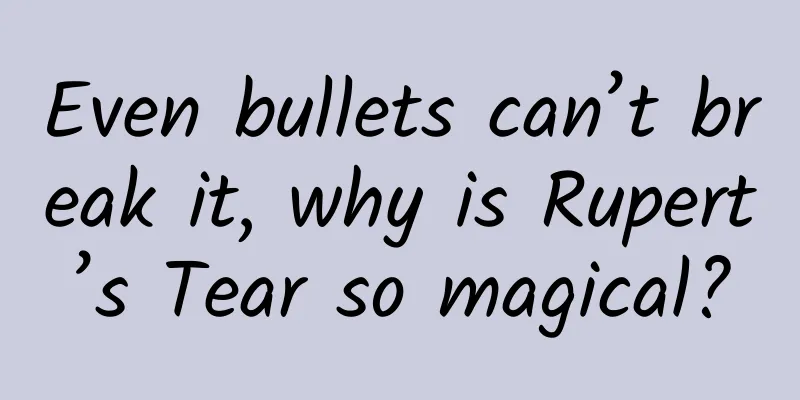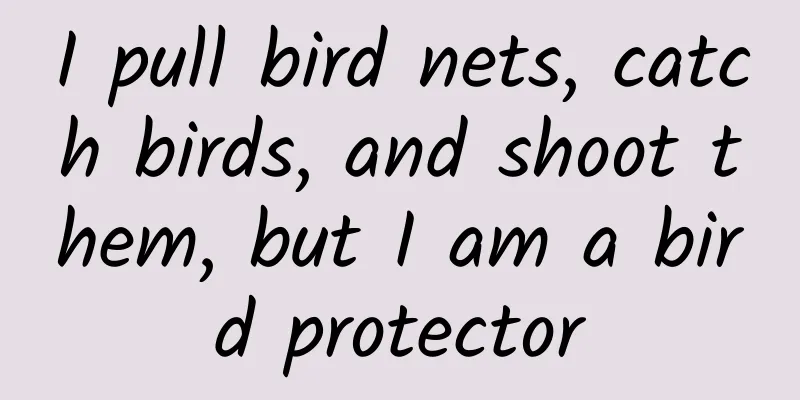Even bullets can’t break it, why is Rupert’s Tear so magical?

|
There is a very interesting little thing called "Rupert's Tears". Essentially, it is a glass product in the shape of a teardrop, but its uniqueness lies in that the head of this glass teardrop is extremely hard. It cannot be damaged by a knife, an axe, or a hammer. Even if it is shot with a pistol, the bullet will shatter it, but the tear of Rupert remains intact. It is indeed surprising that a glass product can have such hardness, but if it is just like this, it is not interesting. Compared with the hardness of the head, the tail of the tear of Rupert is extremely fragile. It only needs to be squeezed hard to break into powder. And it is not only the tail that is broken into powder, but the whole tear of Rupert. How is such an interesting thing made? In fact, this is not a high-tech product. Its birth can be traced back to the 17th century. Rupert's Tears are named Rupert's Tears because they were first made by Rupert, the nephew of Charles I, and the manufacturing method is also very simple. Rupert melted the glass and then let the melted glass drip naturally into the cold water. Thus, a drop-shaped glass product was made. It is Rupert's Tear. How can such a simple manufacturing process produce such an interesting item? What kind of physical principle is contained in it? A major physical concept involved here is "stress". The so-called stress refers to the interaction force between the internal parts of an object when it is acted upon by an external force to resist the action of the external force. According to the different forces, it can be divided into compressive stress and tensile stress. As the name implies, compressive stress is the stress that resists the compression tendency of an object, while tensile stress is the reaction force of an object to the external force that makes the object stretch. If this is not clear, let us give a practical example. We used a piece of cardboard to build a simple bridge between two tables, and then put a mobile phone on it, and the bridge collapsed instantly. If we bend the cardboard into an arch shape and put the mobile phone on it, it can hold up. This is because the deformation makes the cardboard have a strong compressive stress, so it can withstand the added weight on top. After understanding the compressive stress, let's look at Rupert's Tear. When the hot glass melts and drips into cold water, it will instantly solidify when it encounters cold, but there is a sequence of solidification. The outermost layer of the glass will solidify first, while the inside has not yet completely cooled down. This creates a difference, that is, the outside cools and solidifies instantly, while the inside cools and solidifies slowly. Due to thermal expansion and contraction, the inside of the glass will pull the solidified outer layer inwards during the cooling process, and it will become tighter and tighter, thus forming a strong compressive stress on the outer layer of the glass. As the inside continues to shrink, a strong tensile stress will be formed on the inner layer of the glass. Some physicists believe that the compressive stress of Rupert's Tear can reach 7,000 times the atmospheric pressure. With such a large compressive stress, not to mention a pistol, even a Gatling gun with blue flames may not be able to break it. So why is the tail of Rupert's Tear so fragile? The reason is simple, because the area of the tail is too small. Even with strong compressive stress, the small area means that it will break with just a little force, and once the tail breaks, the balance of compressive stress and tensile stress inside the entire Rupert's Tear will be broken, so the entire Rupert's Tear will break. People who come into contact with Rupert's Tear for the first time usually feel that this little thing is magical, but in fact it is not magical at all, because this thing is everywhere around us, and we call it by another name, that is, "tempered glass." Yes, tempered glass is made according to the principle of Rupert's tear. It also increases its strength by gradually cooling the glass from the outside to the inside, so that a strong compressive stress is generated inside. However, due to the shape of tempered glass, its strength cannot be compared with the tear of Rupert's tear, so tempered glass cannot resist bullets. Although it cannot resist bullets, it is impossible to break tempered glass with ordinary tools. Is there any way to easily destroy tempered glass? Of course there is, just like destroying Rupert's Tear. The most vulnerable part of Rupert's Tear is the tail, and the most vulnerable part of tempered glass is the corners. You only need to put a small stone on the corner of the tempered glass and hit it hard, and the whole piece of glass will break. Now you understand why you have to hit the corners of the car window when you are trapped in the car, because the car window is tempered glass. You only need to insert a small stick into the corner of the window and pry it gently, and the whole window will break. Sometimes, some glass doors or glass windows made of tempered glass will explode with just a slight push. What's going on? In most cases, impurities such as sand and stones are stuck in the fragile corners. At this time, if an external force is applied, it will break, just like exploding. For more information, please follow the official account: sunmonarch |
<<: They are the ones who understand God the most.
>>: World Meteorological Day丨What should you do if you receive a weather warning?
Recommend
What is it like to fall in love with AI? Netizens: It's too addictive!
Recently, a blogger on a social platform posted a...
Why are there seven suns in the sky?
On August 18, 2024, Chengdu citizens captured a b...
The great way is simple VS the great ways are different, where does physical organic chemistry lead to?
Von Neumann once said: "Four parameters can ...
Zhang Huimei's "Listen to the Sea" lyrics mp3 network disk Baidu cloud download
Zhang Huimei's "Listen to the Sea" ...
See what programmers are reading in September
In September, everyone focused on the official re...
Henan People's Congress Representatives Suggested to Relax Birth Control as Soon as Possible (Attached Full Text)
The Henan Provincial Health Commission recently r...
Return to the Deep Blue: Whales are mammals, so how can they swim in the ocean like fish?
Overview Unlike fish, whales are secondary aquati...
Why is the new coronavirus always one step ahead of others?
As long as there are susceptible people, the viru...
How big is the Coral Sea, the largest sea in the world?
Produced by: Science Popularization China Author:...
Samsung Note 7 explosion: It's like walking on a towering building
In late August and early September, news about Sa...
Code reuse rate is 99%, Ctrip market insight platform Donut cross-terminal high-performance technology practice
About the Author Brain, a senior software technol...
What are the functions of Guangzhou Financial Mini Program? How much does it cost to make a financial app?
With the advent of the 5G era, the financial indu...
How much does it cost to create an automatic food ordering app in Hexian County?
How much is the quotation for automatic ordering ...
In a mobile Internet company, what are the KPIs of each department?
KPI, or key performance indicator, is a performan...
Illustration | The giant panda "Ya Ya" who traveled to the United States is on her way back to China! Let's take a look at her eating, drinking, defecating and urinating along the way
Yaya is going back to China! Taking a special pla...









